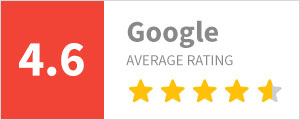How Dentist Headlight Helps Catch Detail At A Distance

The most prevalent magnifying instrument, dentist loupes with dentist headlights is the main, gainful, and majorly utilized piece of innovation in the field of dentistry. All innovations and methods have a demonstrated application; that is, they have a particular use.
The dental loupe is one of a kind, given that it is the one piece of innovation that can make all other advancements and procedures better.
Why?
Since regardless of what methodology you are doing, you need extraordinary representation to do it. The dental magnifying instrument is the most ideal approach to accomplish incredible perception; the better representation you have, the better outcomes you get. The time has come to demystify the loupe choice cycle since it is a moderately simple idea to comprehend. There are a couple of variables that should be viewed when settling on which dental loupe is appropriate for you.
We will show you exactly how simple these ideas are and will ideally diminish the nervousness that you have about choosing to catch detail at a distance.
What Is The Amount Magnification Do You Need?
Deciding the ideal degree of magnification is a difficult exercise, prone to changes depending on the sort of work you utilize the loupes for. As the magnification expands, a field of view diminishes, possibly to the point that you can just view each tooth in particular. Normally, efficiently done hygiene work is best finished with 2x-3x magnification. This considers a few teeth to be found in the field of view at one time. For a solitary crown or other tooth treatment, 4x-6x magnification may be a sound choice.
A smaller field of view additionally implies less light will enter the focal point. When shopping dentist loupes with high magnification, be certain they come fitted with top-notch lighting, also known as dentist headlights.
Visualization – Detail at a Distance
Extraordinary perception is the result of high magnification joined with focused lighting. The lighting must be coaxial; that is, the heading of the light is corresponding to the course of the view. Coaxial lighting is significant because as the degree of magnification is expanded, the field of view gets more obscure. Users of dentist loupes normally begin at low magnification (2x). As they go to higher-power loupes, they begin to execute extreme focus light sources to make up for the hazier field of view at higher amplification. These light sources are either cut on the loupe outline or a headband. This mix of loupes and light source gets bulky, thereby restricting any movement.
The main thing to decide is your right working distance.
Selecting the right working distance implies you will keep an ergonomic posture while you are examining the oral cavity. To decide this distance, sit in an ergonomic situation, as though you were dealing with a patient and take a measuring tape and measure the distance between the scaffold of your nose and that of the patient.
At the point when dental specialists use dentist loupes reliably ( they utilize their loupes constantly, even besides assessment) and need to go above 3x in power, they reach out for dental microscopes to expand the field of work. One of the extraordinary ascribes of the dental magnifying lens is that it has various degrees of amplification (five stages) and an implicit coaxial, focused light source.
Regardless of where in the treatment field you look, you generally have amazing lighting without the need to utilize a patient light. Dentist headlights have majorly replaced overhead lights in the field of dentistry. Dentists who are comfortable with loupes, use them for everything they do, as such, there is no need for patient lights. Some also use a loupe in a two-fold way, when not utilizing the magnifying lens for representation, they use it as a patient light.
How Has Detail At A Distance Helped?
1. Improved Productivity
The incredible representation given by the dentist loupes brings about a raised degree of mindfulness at the demonstrative level and a raised degree of effectiveness at the treatment level. The expanded mindfulness at the indicative level is similar to the advantages of an intraoral camera. The expanded productivity at the treatment level is the result of extraordinary perception.
2. Improved Nature Of Treatment
More than 70% of the treatment that dental specialists perform includes supplanting existing reclamations. The decision between immediate or backhanded reclamations frequently relies upon the measure of outstanding tooth structure. Frequently, tooth structure looks sound at perceptible levels. As such, under high magnification, multiple fractures are quite visible, and so is the process of fixing them.


